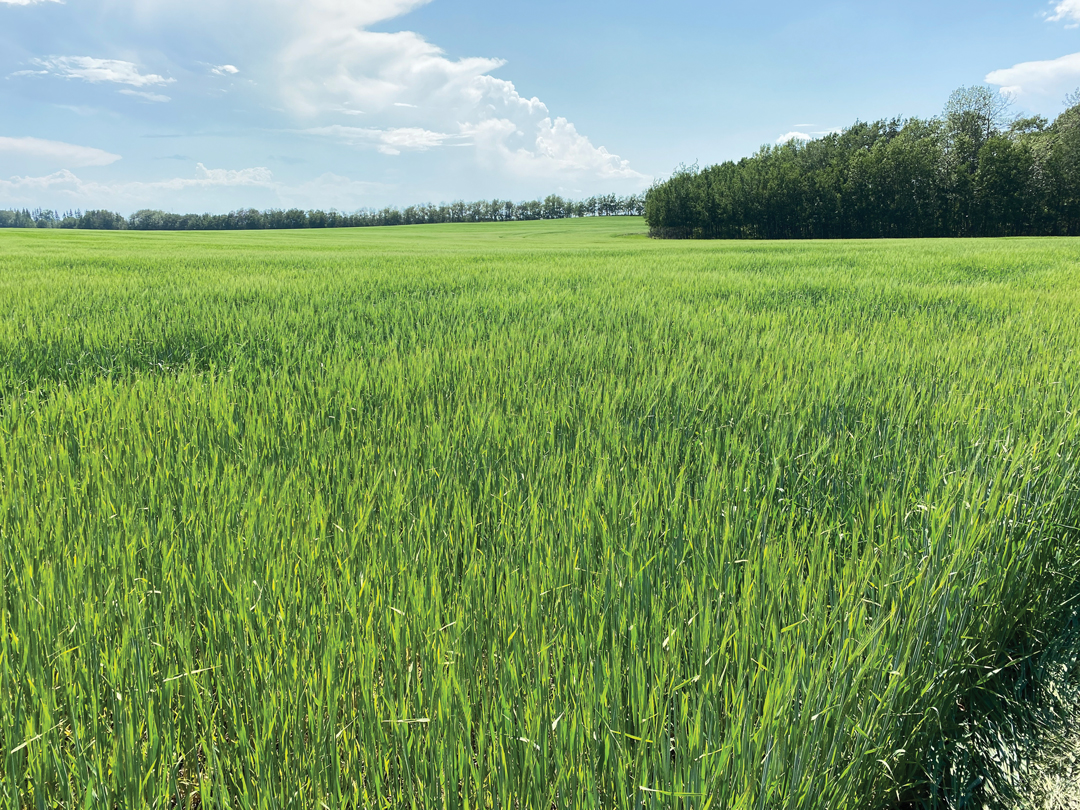SHE SAID THREE SAID
BY SARAH WEIGUM
With more than a handful of classes to choose from, deciding what wheat to put into the ground can be a tough decision. Farmers need to constantly look at their growing conditions, soil and climate type, market potential, and if it’s needed as a crop rotation to break up pest and disease cycles. Three Hills-area farmer and writer Sarah Weigum asked three Alberta farmers: How do you decide what type of wheat to plant?
Byron Jaques
Buffalo, AB
I’m growing Hard Red Spring (HRS) wheat because it’s the best combination of marketing and agronomy for our farm. I took a December futures contract early on—wishing I’d locked in my basis as well. Due to price and movement concerns I have cut close to half my cereal acres, allowing a good portion to be priced.
Essentially, my focus has been on HRS for the past 10 years. Increased yields of Canadian Prairie Spring (CPS) and soft wheat don’t make up for the incurred price discounts. As well, with durum I have issues with getting a good grade. CDC Go is a popular variety on irrigation and that’s what I grow; consistent high yield and grades of No. 1 or No. 2 are my main reasons.
Jason Craig
Delburne, AB
We’re going to grow some soft white spring (SWS) wheat this year because of the higher yield and to get some diversification in wheat. It seems like everybody grows CPS now, so I’m going to try and grow something different. I talked to a guy at Permolex [ethanol plant in Red Deer] and he thought the price for SWS wheat would be around $5 per bushel. He wasn’t concerned with quality issues, as long as the starch levels were good. If we reach our yield goal of 100 bushels per acre, it should be fairly profitable.
SWS wheat is supposed to stand up a lot better so we can give it a lot more fertilizer. As for Hard Red Spring, we’re going to go with AC Stettler again this year. It seems to hold its grade well. You always get No. 1 or No. 2 with it, whereas our other wheat usually grades a No. 2 or No. 3 in this area.
Dan Doll
Fairview, AB
Many of my neighbours have switched to CPS, but so far I’m sticking with Hard Red Spring. My biggest issue, as a small farmer, is not having a lot of storage, so I’d rather have a lower-volume and higher-value crop.
Feed grains are a tough way to try to make a living up here: we’re too far from feeders and ethanol plants. Volume doesn’t have as much of an advantage when you take freight off it. This year, I am questioning that decision.
My protein is all at 11 per cent and, because there’s not much high-protein wheat in this area, it’s hard to move. I’m seeing that some of the CPS wheat is moving faster than the low-protein HRS.
I have to max my production per acre. I hoped to do it on quality, but I may have to go the other way and do it on quantity.








